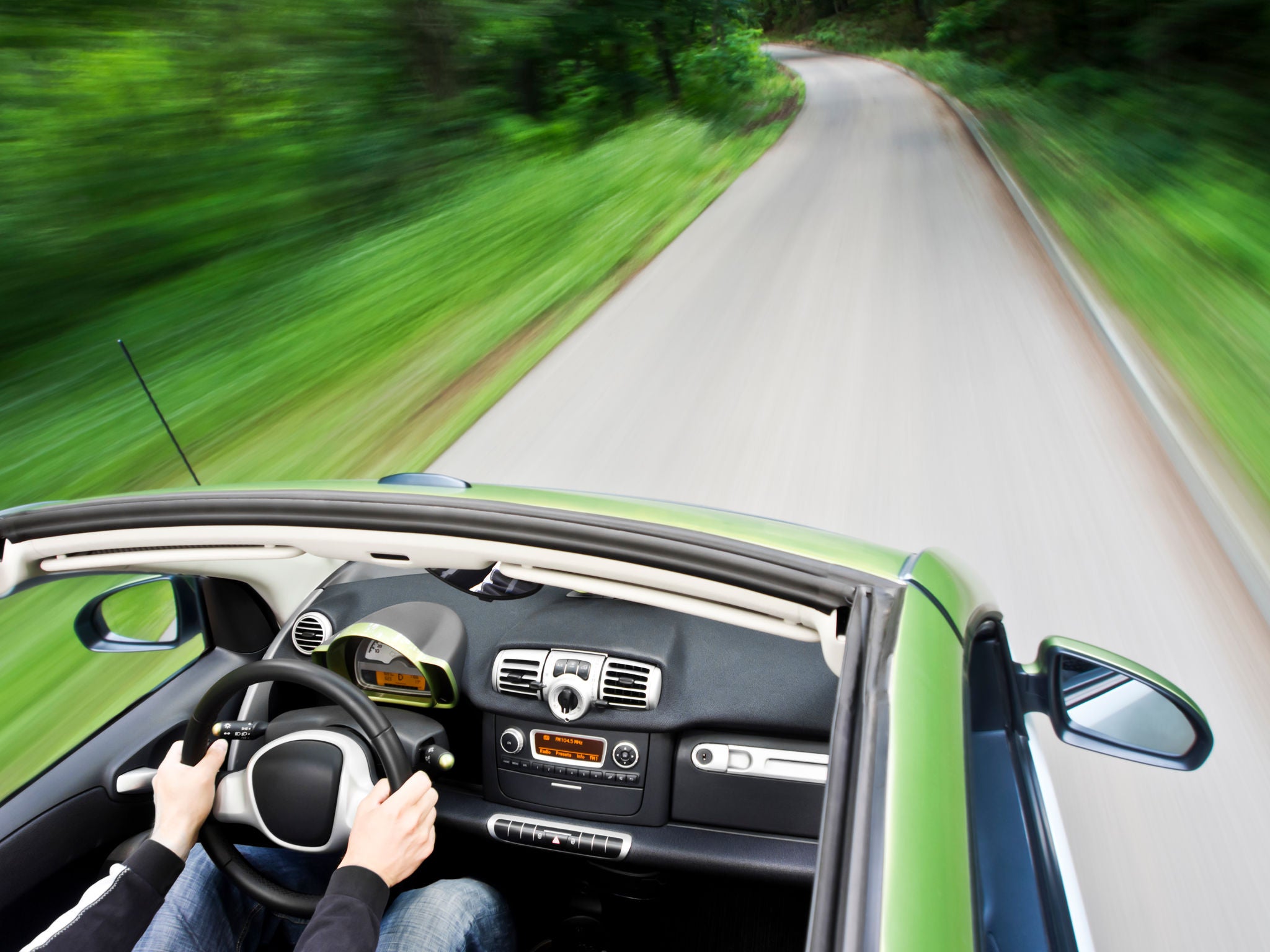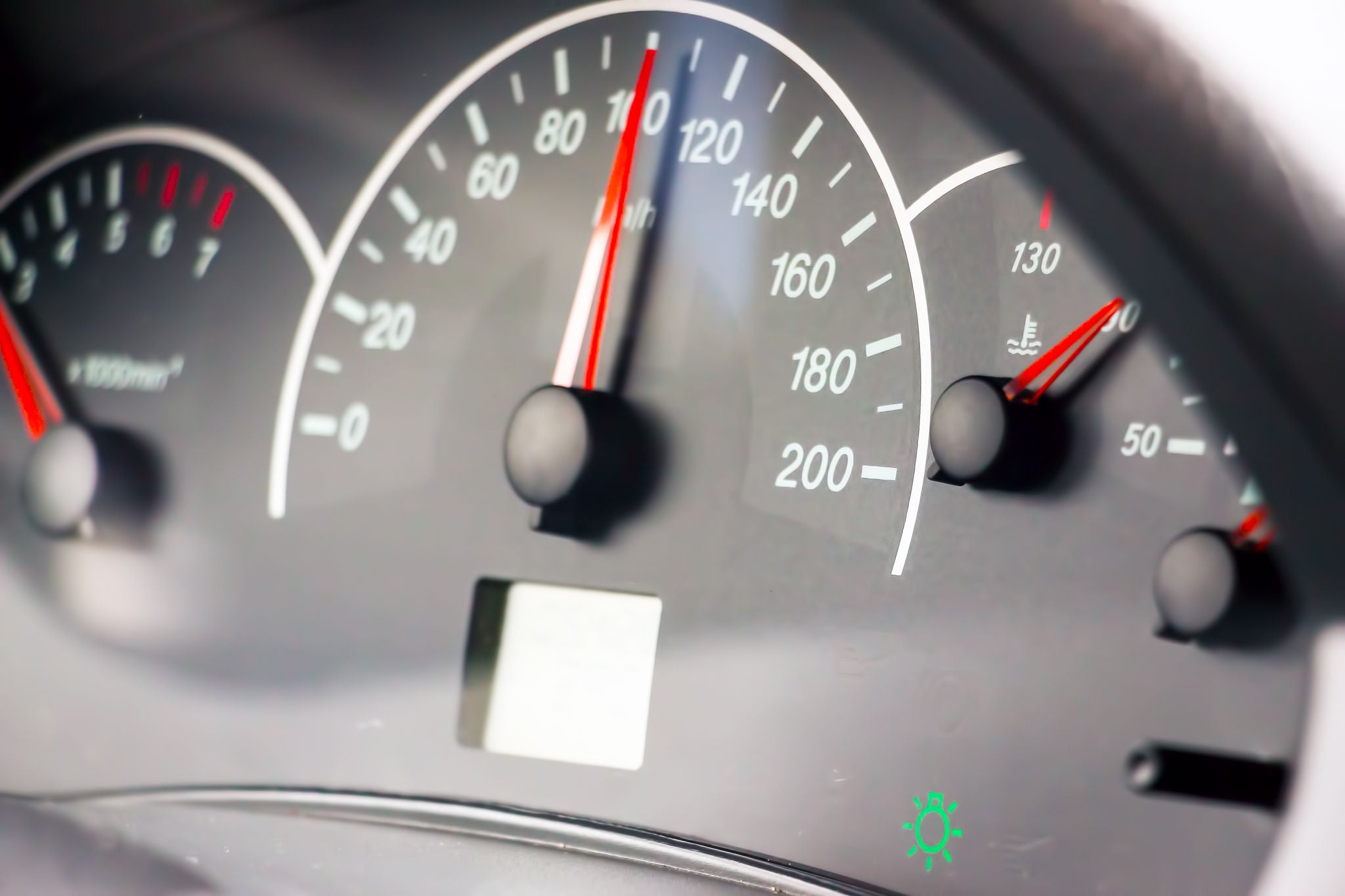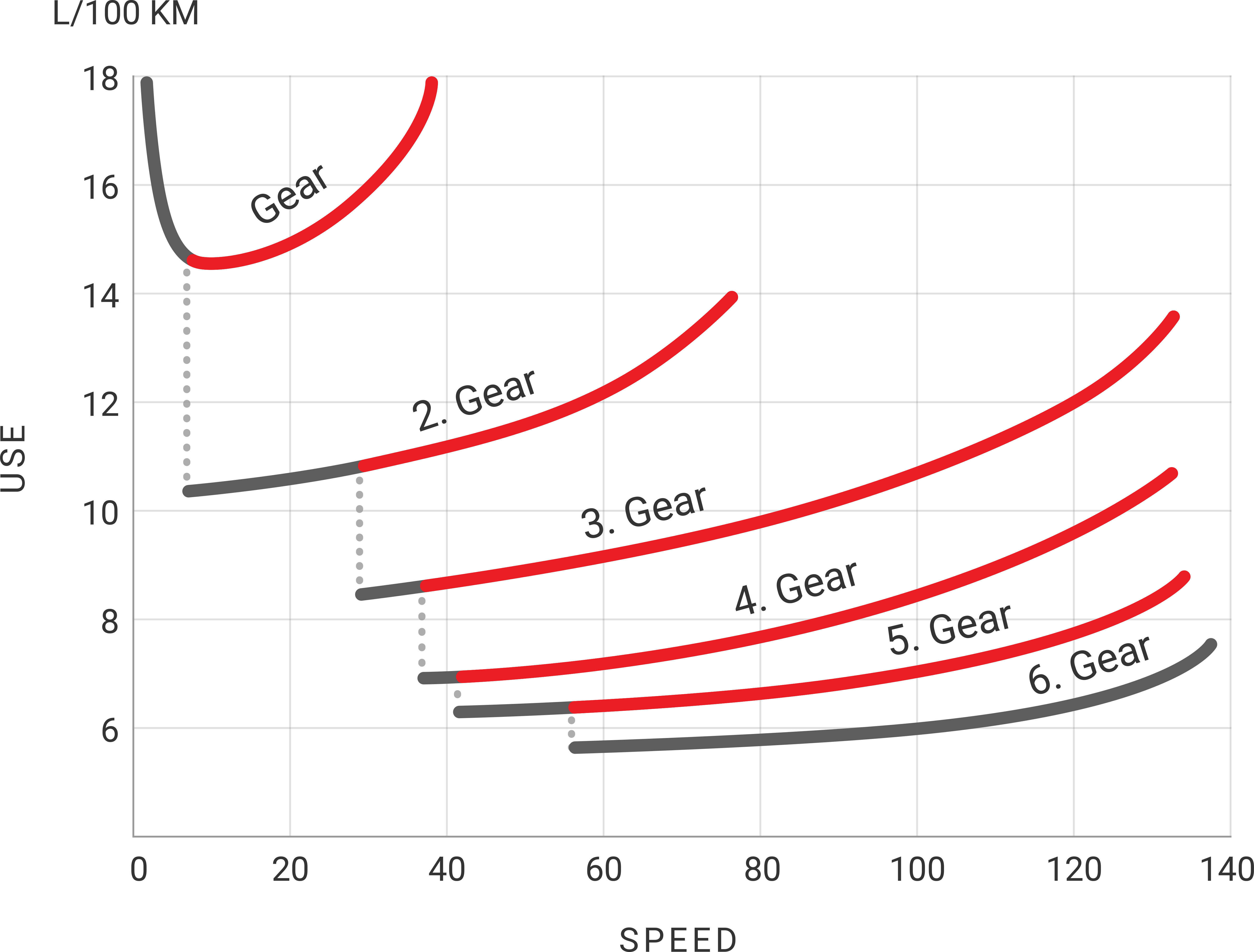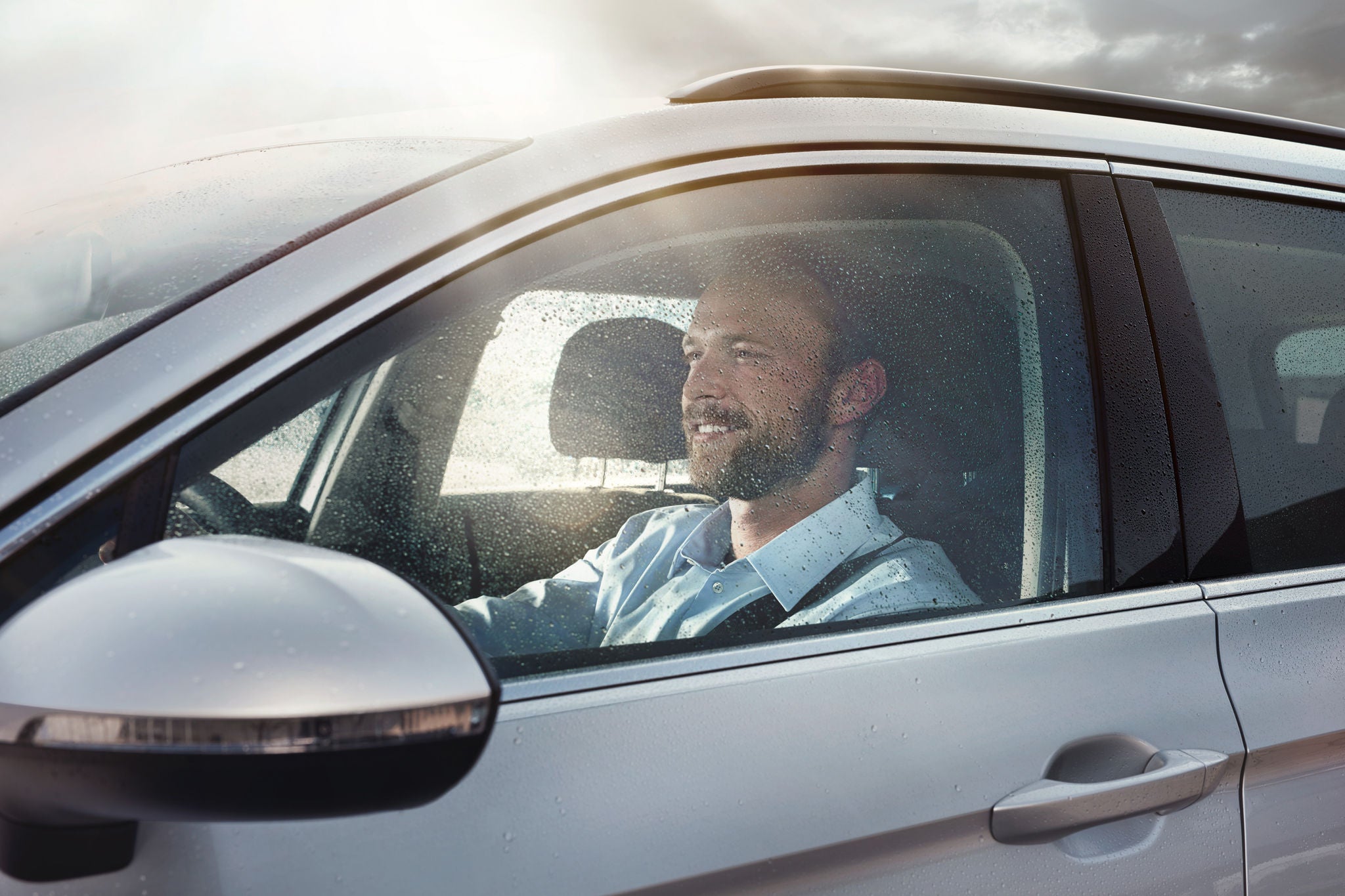Who has not yet switched to an alternative drive system, can already work on an environmentally friendly way of driving.

Ecological driving: How can I do that?
The most important tip for driving economically is: Drive gently, evenly and smoothly. This is because all driving processes – acceleration, shifting, braking – require energy. As the driver, you have the power to positively affect the energy consumption. Avoid sharp acceleration, abrupt braking or late shifting. This doesn't just increase the fuel consumption, it also increases the wear and tear of the car. So try to “flow” with the traffic.
When accelerating, do not fully press down on the accelerator and reduce your speed after overtaking. This way, you do not need to brake unnecessarily hard, as abrupt braking wastes the acceleration energy that has already been applied. It is particularly recommended to use the engine brake or fuel cut-off. This happens if you release the accelerator with the gear engaged. The engine then brakes mechanically.
You can use the engine break in advance e.g. at red traffic lights, by slowly rolling up to the traffic light, instead of stopping immediately in front it. By rolling with the fuel cut-off, you brake automatically. As soon as the traffic light turns green, you can even drive off again from the movement if necessary. So ecological driving runs smoothly. Also, waiting at the traffic lights in neutral does not save fuel. Particularly on roads that you know well, you can switch off your engine at red lights that last more than twenty seconds, which also saves fuel.
How can I calculate my fuel consumption?
Those who drive eco friendly cars are already doing themselves a huge favour. This is because driving environmentally friendly means reducing your own fuel consumption to a minimum, thereby saving money. It is even possible to permanently reduce the average consumption of your car.
Those who want to calculate their own fuel consumption can either use the petrol consumption display (if available) or measure the fuel consumption of the car themselves.
This requires only a few steps and can be easily integrated into your daily use:
- The next time you fill up your car, fill it to full and set the trip odometer to zero.
- Drive on your usual routes until you need to fill up again, but this should be for at least 97 kilometres.
- Before filling up again, note down how much petrol you have used since the last re-fill.
- The difference results in the petrol consumption since the last re-fill.
- Multiply the calculated petrol consumption by 100. Divide the result by the number of kilometres displayed on your trip odometer.
- Now you can calculate the average petrol consumption of your car.

In which speed range does the car have the lowest petrol consumption?
When shifting up into the next gear, the speed of the engine is particularly important. A higher engine speed, i.e. the extension of the gear or high-speed driving, will increase your fuel consumption. Therefore, you should keep your engine speed low by switching up early. However, if the engine speed is too low, this should be noticeable in the car due to jerking. You can clearly feel this so-called "jerk limit". Simply shift down a gear again to continue driving smoothly. So you can protect your engine.
To save fuel and to drive economically, it is advisable to follow these rules of thumb:

How much tyre pressure is best for fuel-efficient driving?
To be able to use your tyres for a long time, we recommend that you check the tyre pressure of your car regularly. This also increases safety, driving comfort and, at the same time, allow you to save fuel at optimum tyre pressure. So you already have fuel-efficient tyres!
If the air pressure in thecar tyres is too low, rolling resistance increases, as does petrol and diesel consumption. In addition, there are potential dangers due to poorer driving behaviour and longer braking distances. Excessive tyre pressure is also a safety risk.
Things to consider when checking the tyre pressure. Find out how to measure the tyre pressure of your car, and which bar your tyres need.
Ecological driving: Other things to bear in mind
Not only is it forbidden to leave the engine to warm up, it is also pointless. Rather, it is better to start the engine and drive immediately, because an engine only gets really warm when driving with a heavy load, and is therefore cheaper in consumption.
Likewise, the additional weight added to a car increases average consumption. Only bring what you need with you on a drive. For example, remove any additional weight such as luggage and roof racks after a holiday. Not only do these weigh a lot, they also increase air resistance. Then, you car ends up consuming more energy than is necessary.
Speed also has an impact on petrol consumption. As you already know, regular unnecessary acceleration and deceleration significantly increases your fuel consumption. It is better to keep the driving speed constant. So if you have cruise control, it's easier to save fuel: Cruise control is fuel efficient because it keeps the speed of a car constant. Manual speed control is only recommended when driving uphill or downhill.
Travelling at speeds exceeding 97 kmh also increases petrol consumption. At these speeds, the petrol consumption increases significantly because of air resistance. Open windows can increase fuel consumption significantly even from 80 kmh, but certainly from 97 kmh. This is because more air resistance also means: The energy consumption increases – as does petrol consumption.
Your air conditioner also requires fuel. Other comfortable features such as heating or heated seats also increase consumption.
Ways to save petrol: Overview
What is important for an environmentally friendly and energy-saving drive? Here is an overview of our tips:
- Drive with caution.
- Use the advantage of the fuel cut-off.
- Avoid idling for long periods of time and switch the engine off.
- Switch gears early and keep the engine speed low.
- Optimally increase tyre pressure, save fuel.
- Move off right away instead of warming up the engine.
- Only transport what you really need.
- Drive evenly and maintain a constant speed.
- Keep the windows closed when travelling at high speeds.
- Switch off additional devices or keep them on low.
